Fashion museums are often built from the inspirations of designers and their work. However, when it comes to fashion, museums showcasing timeless designs, illustrations and textiles have become staples to fashion enthusiasts and aspiring designers.
Many familiar names like Karl Lagerfeld, Olivier Rousteing, and Hubert de Givenchy began their fashion businesses by following the footsteps of their influencers and mentors, while others trod their own paths after walking the halls of some of the world’s celebrated art institutes and museums. As the world of style evolves, so will these sanctuaries of creativity that have contributed to the growth of the multibillion-dollar fashion industry.
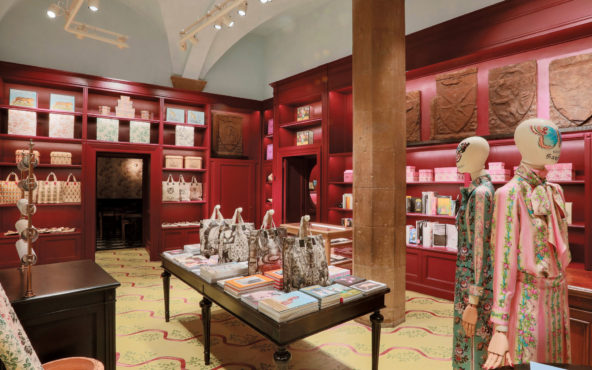
#10 GUCCI GARDEN, ITALY
Florence has earned its title as one of the most beautiful cities in Italy. Near the Ponte Vecchio bridge and the Cathedral of Santa Maria del Fiore, high fashion Italian labels line the streets reminding tourists that Milan isn’t the only fashion-forward city to take advantage of during their visit.
If you’re a Gucci-lover, you’ve probably already noticed that nearly every Gucci Flagship store worldwide has a unique pop of flamboyant color and very identical design – each of them resembling the color detail and certain aspects of the Gucci Garden museum. This Alice in Wonderland-like décor is no mistake. The Italian brand’s pop surrealism art plastered onto many of its couture pieces and interior design as become a large part of its creative charm.
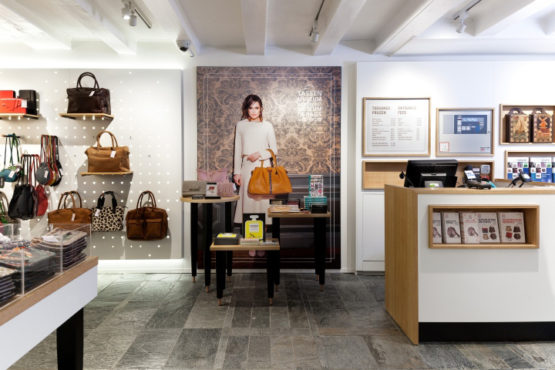
#9 MUSEUM OF BAGS & PURSES, NETHERLANDS
Hermes’ infamous Birkin and Chanel’s 2.55 handbags are not as modern as you may think. As a fashion lover, you may already be aware that there are some purses and handbags that are deemed “iconic.” In between Amsterdam’s famous canals, the Museum of Bags and Purses holds proof that like the Birkin and the 2.55, the history of valuable and timeless handbags stretches far beyond their fashion houses.
After walking through every collection, besides having a piqued sense of craftsmanship curiosity, you’ll have a better appreciation – and possibly a list of questions – about the detail and origin of every bag you own.

#8 BATA SHOE MUSEUM, CANADA
The Bata Shoe Museum demonstrates that what we see on the runway every season during fashion week is nothing new to the art of shoe production, but rather various types of modernized and updated forms of previous creations. Top brands like Salvatore Ferragamo and Vivienne Westwood are two out of many fashion houses that have contributed to the evolution of couture footwear – some of which are featured at this museum.
Like any fashion exhibition, historic pieces and detail within the collections at the Bata Shoe Museum are used as inspiration for upcoming fashions lines. Located in Toronto, this quirky museum stands as a reminder that history does indeed repeat itself, especially when that history pertains to just footwear.
#7 THE KYOTO COSTUME INSTITUTE, JAPAN
Many areas of Japan can be explored, such as its local cuisine and combined cultural traditions in the modern world, but its textile and style history can be unfortunately overlooked unless you decide to take a small excursion to Kyoto. Kyoto is the origin of ‘Geisha,’ traditional Japanese female entertainers and artists, which makes the Kyoto Costume Institute setting perfect for fashion enthusiasts and Japanese antiquity alike.
The Western fashion collections are to die for, but nothing can compare to the thousands of garments demonstrating the diversity and uniqueness of Japanese style, as well as the history behind intertwined fashion between both cultures.
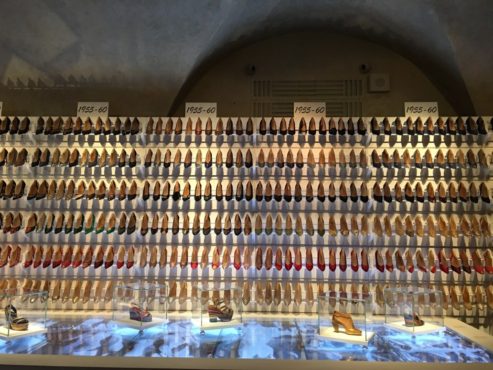
#6 MUSEO SALVATORE FERRAGAMO, ITALY
Similar to the late French fashion designer, Hubert de Givenchy, Salvatore Ferragamo was also a designer to the stars. Pre-design replicas for American Hollywood starlets like Marilyn Monroe, Ava Gardner, and Audrey Hepburn are showcased among the countless vintage couture pieces throughout the museum.
Between a wall lined with the designer shoe prototypes ranging from the 1950s to the 1960s and an entire room dedicated to the Italian designer’s work with dozens of celebrities in the mid-’90s, Museo Salvatore Ferragamo’s frozen-in-time interior décor is very well constructed and aesthetically pleasing.
#5 MUSÉE CHRISTIAN DIOR, FRANCE
Christian Dior held a personal connection to Granville, a small town within the French northwestern city of Normandy. Because he was very fond of the small coastal town, the late French fashion designer chose this location to house his best vintage couture pieces from the early modern era.
The museum’s Villa Les Rhumbs showcases Dior’s couture gowns, accessories, photographs of the designer’s life, and features a floral garden near the villa. As if the atmosphere of this museum couldn’t get any cuter, the tranquil contemporary garden with a reflecting pool – formerly a flowerless greenhouse – was entirely transformed by Dior himself nearly 100 years ago.
#4 CRISTÓBAL BALENCIAGA MUSEOA, SPAIN
The 1930s and 1940s eras took fashion faux-pas and strict attire to bold and daring points. Upper-class women traded in their long skirts for loose trousers and their flowing hair for simple bobs. Cristóbal Balenciaga was one of the very few fashion designers at the forefront of the resistance, before dominating 1950s European fashion alongside Christian Dior and Coco Chanel. There is no question as to why there is an entire estate dedicated to his amazing life and work in his birthplace of Getaria, Spain.
The Spanish couturier’s namesake brand has since had a significant makeover and his name can be spotted on nearly every major celebrity’s handbags and shoes as well as popular fashion magazines worldwide.
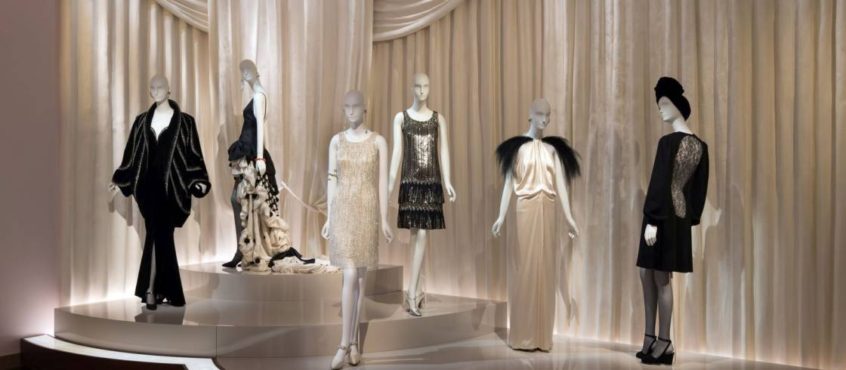
#3 MUSÉE YVES SAINT LAURENT, FRANCE
Whether they’re seasonal or presented year-round, Paris should be your main go-to when it comes to basking in the birth and development of the fashion industry as we know it today. Entire museums that celebrate the history and life’s work of a fashion designer is quite rare in this small town. However, if said designer has made an enormous and timeless mark on French culture, then showcasing that creator’s work is a must. Yves Saint Laurent had done just that.
Musée Yves Saint Laurent is a Parisian fashion staple because of its remarkable and unique ability to portray the late designer’s style, centering around the continuously unpredictable and modern selection of fashion exhibitions in the heart of Paris.
#2 VICTORIA & ALBERT MUSEUM, ENGLAND
If you’re looking for detailed historical fashion trailing back up to 5,000 years and immense visual aesthetic, then the Victoria & Albert Museum has precisely that and then some. It should be no surprise that this London gem is placed at the very top of the list.
From decades of Fashion Week’s most iconic shows to one of the largest Christian Dior Dress exhibits displayed in the UK, this museum, which is located in the Chelsea neighborhood, rightfully stands out from the rest as the most unique and distinguished fashion-forward museums in the world.
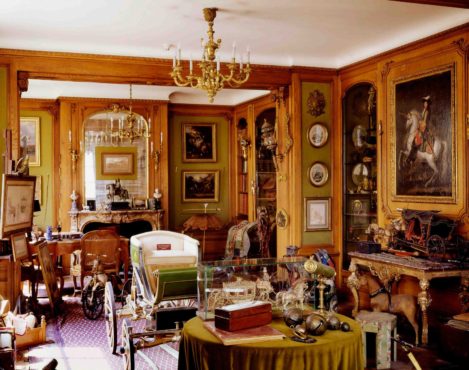
#1 THE HERMES MUSEUM, FRANCE
The ultra-exclusive museum open only to Hermès’ staff and selected guests, which was formerly Emile-Maurice’s office. Some of the stellar guests who have been invited to visit the museum include Elizabeth Taylor, Andy Warhol, Grace Kelly and The Birkin Fairy!
Today, the museum is more than an exhibition hall but rather a source of inspiration for Hermès’ designers. Every Tuesdays, the maison’s artisans are invited to visit the museum for inspiration. It’s also a place frequented by Hermès’ designers for accessories, ready-to-wear and crystal ware.
Sources: thetravel, scmp.com